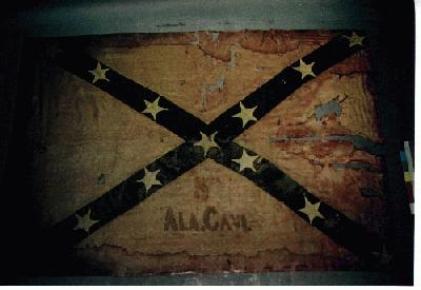
| George Washington Higginbotham Served in the 3rd. Alabama Cavalry during the war for Southern Independence |
| The background midi sound file for the tune of "Jine The Cavalry" comes from "The Borderland Collection", Copyrighted 1998, Scott K. Williams, All Rights Reserved. Click Here for lyrics |

| Actual Regimental Flag of the 3rd. Alabama Cavalry Photo Courtesy Maurice Higginbotham |
| Pvt. George Washington Higginbotham 3rd. Alabama Cavalry, C.S.A. |
